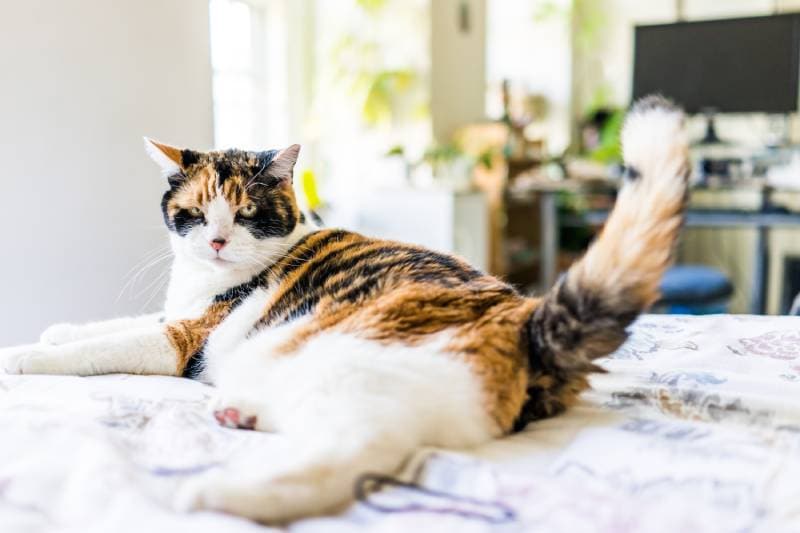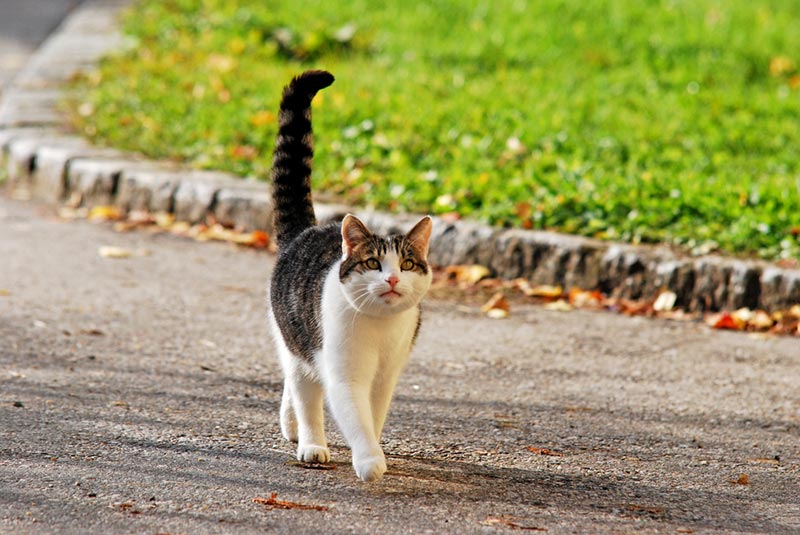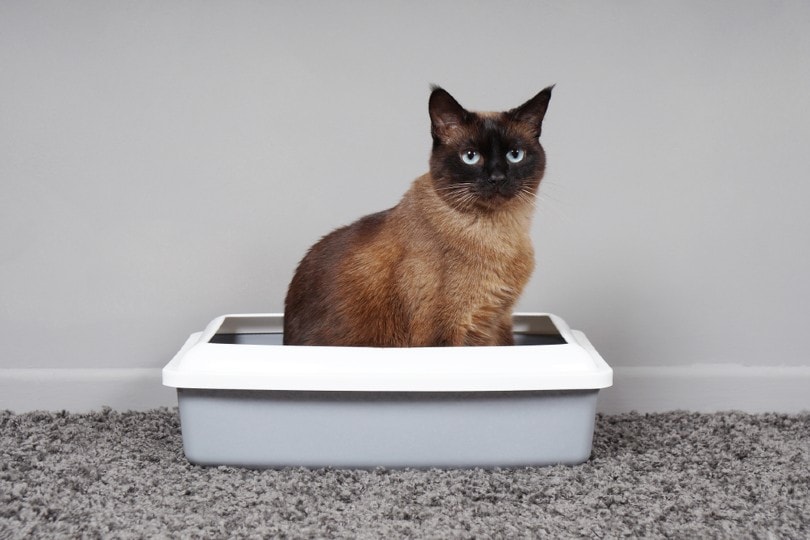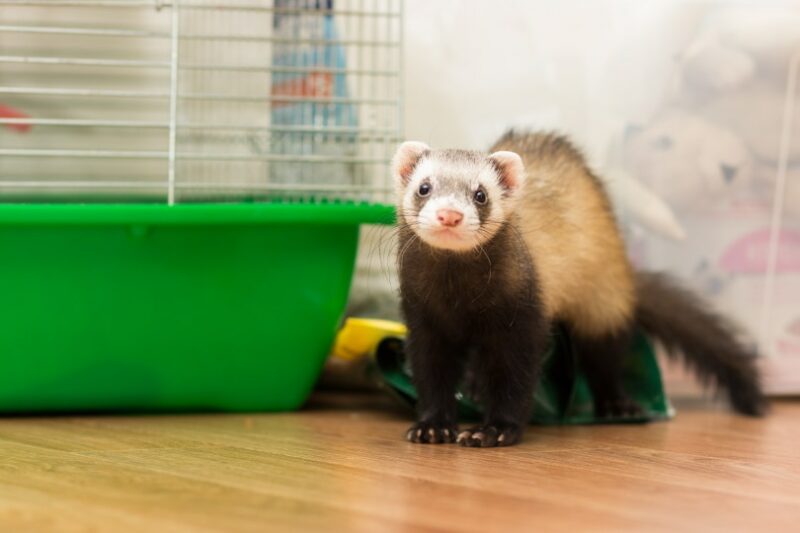VET APPROVED

The information is current and up-to-date in accordance with the latest veterinarian research.
Learn more »Cats are interesting creatures, and many of their behaviors may seem like a mystery. One such behavior is wagging or thumping their tails while lying down. If you’ve ever seen your cat do this, you may have wondered why.
While most people think that this is purely a sign of relaxation or playfulness, which it certainly can be, there are a few other reasons that cats do this.
This article explores the six possible reasons why cats wag their tails while lying down. We also discuss what this behavior might mean regarding your cat’s mood and overall health.

What Is Your Cat Trying to Say?
When cats wag or thump their tails while lying down, they could be displaying a wide array of their emotions in a way that’s sometimes different from what you’d expect if they were standing. These can be interpreted differently depending on the situation they’re in and your cat’s body language.
Observing how your cat behaves, and what their body is saying based on their tail and ear position, pupil size, vocalization, and general body language cues will help you understand your feline better.
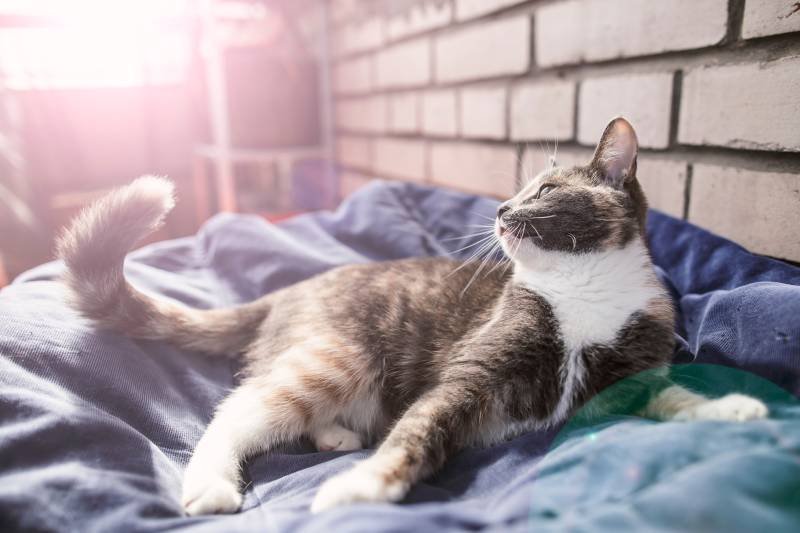

The 6 Reasons Cats Wag Their Tails While Lying Down
1. Just a Simple Hello
If you’ve just come home and your cat is resting somewhere comfortably and is not super keen to get up and greet you, as their belly is full and they are content as they are, they may just wag their tail as a sign they acknowledge your arrival.
They may eventually get up in order to rub against your legs and seek attention, but not every time. After all, some cats can be quite independent, while others will not waste an opportunity to come to you as if you’ve been gone for far too long.
2. Display of Happiness and Content
Cats are quite expressive when it comes to showing their emotions. When cats wag their tails in a calm and slow manner while lying down, it may indicate how happy and content they are. This behavior can also be a sign that they’re feeling comfortable and safe, especially when combined with them rolling around, exposing their belly, or wagging their tail.
Cats wagging their tails slowly while lying down as a sign of contentment and trust may be displayed either when they’re on their own and not focused on anyone or anything in particular, or sometimes if they are paying attention to their human or another familiar pet companion.
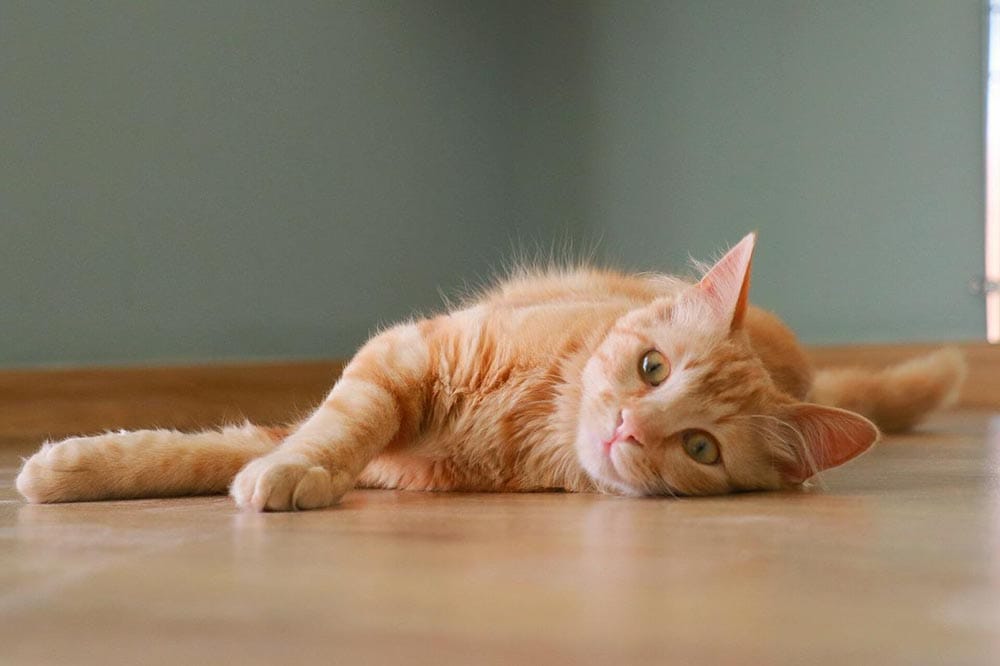
3. Playfulness
Some cats may wag their tails while lying down as a sign of excitement or anticipation of playtime. This could express their eagerness to play or engage in another activity with their owner or another cat.
When your cat feels playful, excited, or is stalking potential prey, they may wag their tail back and forth more rapidly or twitch the tip of their tail and sometimes meow in a gentle, playful voice, or make other sounds like chattering or chirping. When this happens, grab toys like balls, stuffed animals, and interactive toys. Cats love to chase and pounce, so toys that move or can be thrown are often a hit.
Always keep your cat’s toy selection fresh by rotating them frequently. This can help prevent boredom and keep your cat interested in playing. Also, encourage healthy play behaviors to avoid boredom or frustration, through the use of mental stimulation and environmental enrichment, setting up scratch posts, vertical perches, climbing and hiding spots, and many more.
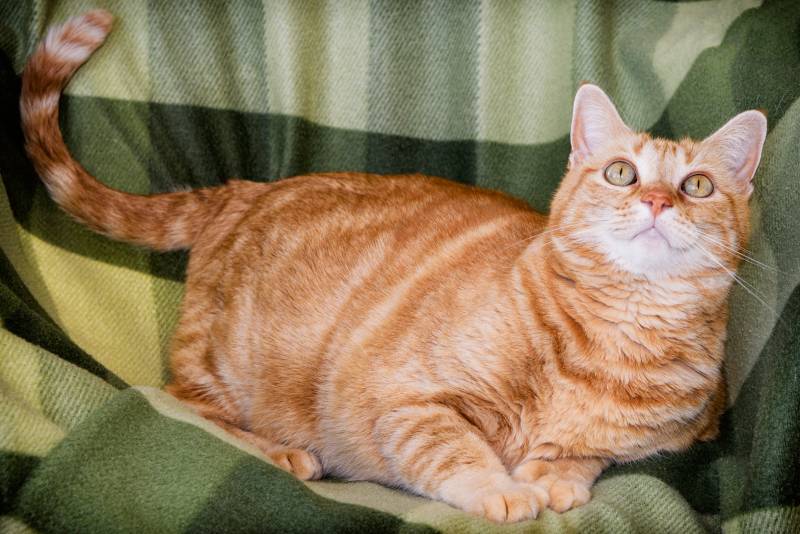
4. Alertness or Stalking Prey
Cats may also wag their tails while reclining to stay alert and aware of their surroundings. When your cat is lying down and wagging their tail slowly, it may indicate they feel wary of their surroundings, watching carefully for a potential threat and picking up a scent, or they are focusing on prey, and planning their attack. This is especially true if they are lying down with their body very close to the ground, ready to pounce any second.
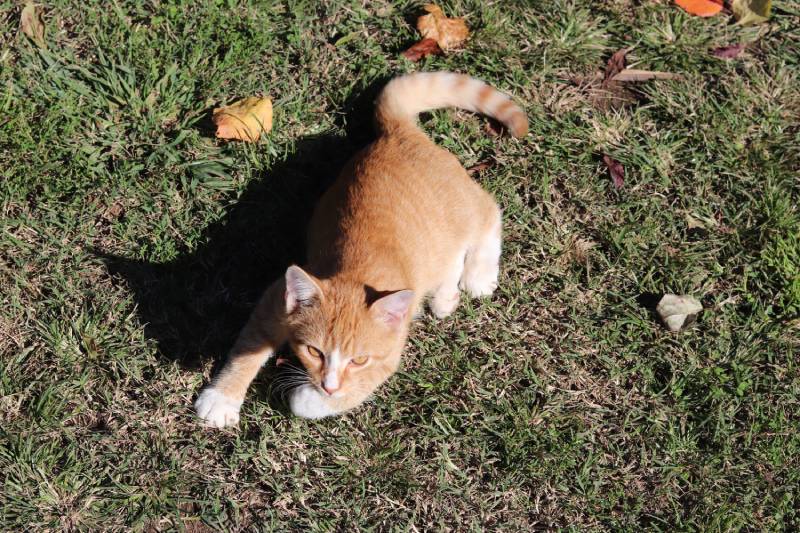
5. Frustration or Discomfort
Like humans, cats can show irritation and discomfort by wagging their tails while lying down. There are various reasons why your cat might be irritated or uncomfortable.
A vigorous and abrupt tail wagging from your cat often signifies irritation or frustration. If you notice this type of tail wag from your reclining cat, it is best to leave them alone.
Cats may also show this behavior when they feel nervous or scared. A tail wagging at a quicker pace can indicate that the cat feels uncertain about the situation and is looking for a way out.
6. Pain or Illness
Finally, tail wagging while lying down can in some circumstances imply that your cat is not feeling too great. However, this is generally combined with other sometimes more obvious signs of pain or illness. If you notice your cat being lethargic, eating less or refusing to eat altogether, hiding, limping, or having any difficulty moving, jumping up and down, or appearing stiff and struggling to settle down, it’s important to contact a vet as soon as possible to.

Are There Different Types of Wags Your Cat Might Display?
From slow, gentle wags to wild, frenzied whips, your cat may show various tail wags while lying down. Your cat’s physical and emotional state can greatly affect this behavior. For instance, if your cat feels calm and content while lying down, they might give a few gentle and slow swishes of their tail.
However, if they’re feeling anxious or threatened, their tail may become rigid, and they may twitch it back and forth, or if they are frustrated, they may thump it against the ground. Similar excitable and rapid tail movements are noted if the cat is focusing on stalking a prey animal. It’s important to pay attention to both the speed and intensity of the wag. The more intense it is, the stronger the emotion your cat is trying to communicate to you.

Conclusion
Cats often wag their tails while lying down to communicate with you or other animals, or sometimes purely as a sign of content on their own. It is best to pay attention to the context in which your cat is wagging their tail, as this can provide valuable clues about their emotional state and needs.
If you need clarification on what your cat is trying to communicate, it’s always a good idea to consult a veterinarian or animal behaviorist. Also, remember that all cats are different, and they may show different behavioral patterns.
By working to understand your specific cat’s tail movements and other behaviors, you can develop a deeper bond with your pet and provide them with the care and attention they need to thrive.
Featured Image Credit: Kristi Blokhin, Shutterstock
